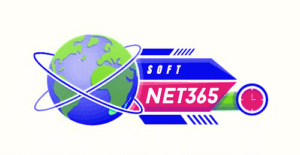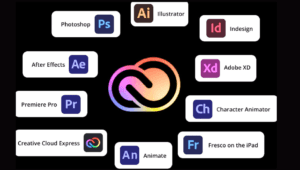Creative Cloud is definitely the best option for fostering creativity in the digital age. However, what makes it so unique, and why has it emerged as the preferred platform for companies, academics, and creative professionals alike? Let’s get started.
What is the Creative Cloud?
Overview of Creative Cloud
Adobe created Creative Cloud, a collection of more than 20 desktop and mobile apps, resources, and services designed with creators in mind. It provides everything required to make ideas a reality, from graphic design to video editing.
A Brief History of Creative Cloud
Adobe’s move from traditional software to a subscription-based business model started with the 2011 launch of Creative Cloud, which completely changed how people access and utilize creative tools.
Importance of Cloud-Based Creativity
Users may communicate in real time, access their projects from any location, and stay up to speed with the newest features and tools thanks to the cloud-based model.
Who is the Creative Cloud for?
Creative Professionals
The flexible tools in Creative Cloud are useful for a variety of professionals, including illustrators, photographers, video editors, and graphic designers.
Businesses and Enterprises
Creative Cloud streamlines team workflows by giving firms access to shared libraries and collaboration tools.
Students and Educators
Students and teachers can access excellent creative resources for teaching and learning with affordable programs.
Key Features of Creative Cloud
Cloud Storage
How Cloud Storage Works
For safe project storage and cross-device access, Creative Cloud provides cloud storage.
Advantages for Collaboration
By exchanging files and collaborating on projects in real time, teams may work together with ease.
Access to Creative Applications
Adobe Photoshop
The industry norm for graphic design and photo editing.
Adobe Illustrator
is ideal for producing illustrations, logos, and vector graphics.
Adobe Premiere Pro
is a cutting-edge video editing tool that is adored by pros around the world.
Integration Across Platforms
Desktop and Mobile Compatibility
With Creative Cloud, you can begin a project on your PC and complete it on your phone.
Seamless Updates
Users are guaranteed to always have the newest features thanks to automatic updates.
Collaboration Tools
Shared Libraries
Across projects, save and distribute resources like fonts, colors, and pictures.
Real-Time Editing
Work together in real time without version conflicts with your teammates.
Benefits of Using Creative Cloud
Flexibility in Workflows
Whether used by large teams or independent contractors, Creative Cloud can adjust to each user’s workflow.
Cost-Effective Subscriptions
Users only pay for what they require with different plans.
Access to Learning Resources
To assist customers in becoming proficient with their tools, Creative Cloud offers resources, templates, and lessons.
Pricing Plans for Creative Cloud
Individual Plans
Affordable priced options for amateurs and independent contractors.
Business Plans
Designed with teams in mind, providing improved functionality for collaboration.
Student and Teacher Discounts
Educational customers can now access Creative Cloud thanks to significant reductions.
How to Get Started with Creative Cloud
Setting Up Your Account
Create an Adobe ID and look over the many plans that are offered.
Choosing the Right Plan
Whether you need a plan for design, photography, or video editing, choose one that meets your demands.
Installing the Applications
Install the apps by downloading them from the Creative Cloud desktop app.
Tips for Maximizing Creative Cloud
Utilizing Templates and Presets
Utilize presets and pre-made templates to save time.
Taking Advantage of Tutorials
Take advantage of Adobe’s huge teaching library.
Leveraging Adobe Stock
To improve your projects, you can access millions of stock images, movies, and themes.
Common Challenges and How to Overcome Them
Managing Subscription Costs
Keep an eye out for sales and package discounts.
Troubleshooting Installation Issues
For problem fixing, Adobe’s forums and support staff are excellent tools.
Staying Updated with Features
To get the most out of Creative Cloud, stay up to date on the most recent upgrades.
Why Creative Cloud Stands Out
Comparison with Competitors
Competitors cannot match the extensive toolkit that Creative Cloud provides.
Unique Selling Points
Its collaboration features, online storage, and integration make it unique.
The Future of Creative Cloud
Innovations in Cloud-Based Design
Anticipate improved collaborative features and additional AI-powered tools.
Expanding Accessibility
Adobe is trying to lower the cost and improve the use of Creative Cloud.
Conclusion
The Creative Cloud is a creative environment rather than only a collection of tools. It gives you all the tools you need to realize your idea, regardless of your level of experience or interest.
FAQs
1. What is the Adobe Creative Cloud used for?
Digital content, including websites, films, and graphics, can be designed, edited, and produced with Adobe Creative Cloud.
2. Can I use the Creative Cloud offline?
After installation, the majority of Creative Cloud apps can be used offline; however, updates and licensing verification require sporadic internet access.
3. Is the Creative Cloud suitable for beginners?
Of course! To assist new users, Creative Cloud provides lessons, templates, and an easy-to-use interface.
4. How much does Creative Cloud cost?
The plan determines the price, with options for students, businesses, and individuals. Teachers and students can receive discounts.
5. What are the alternatives to Creative Cloud?
Affinity Suite, CorelDRAW, and free programs like GIMP and Canva are substitutes.

